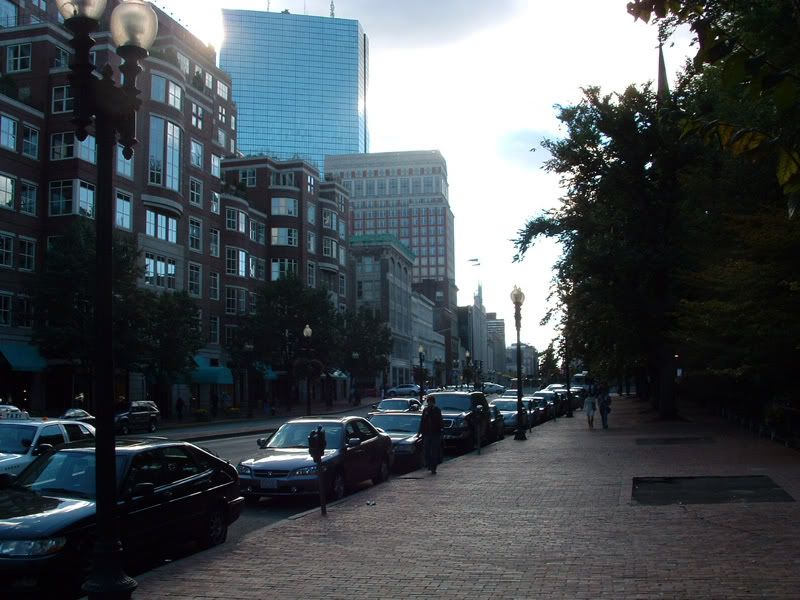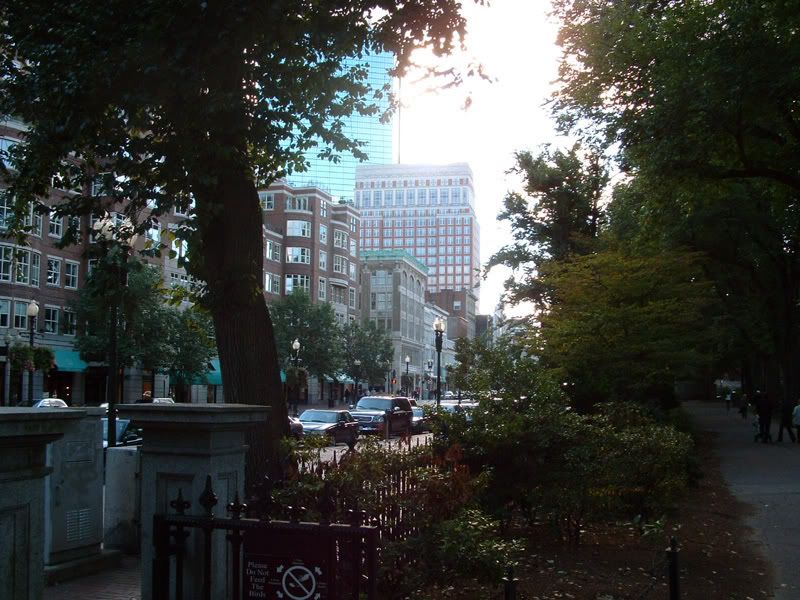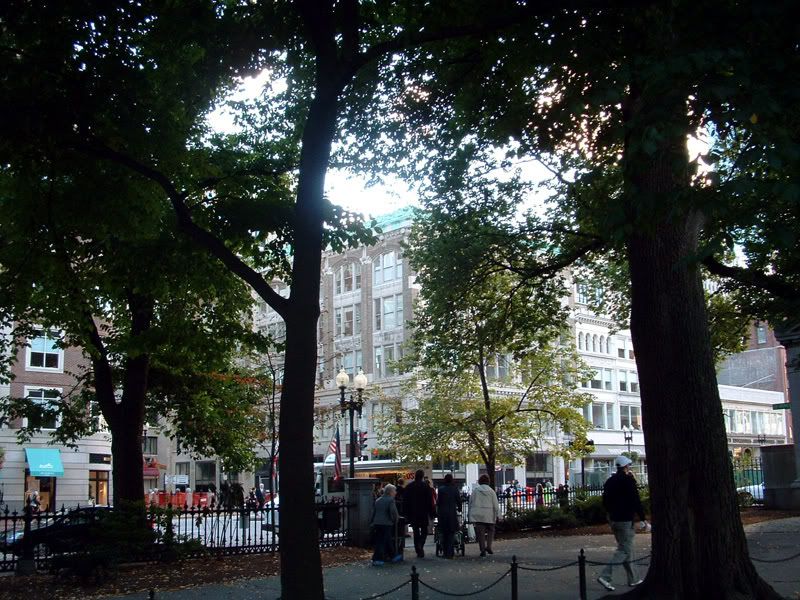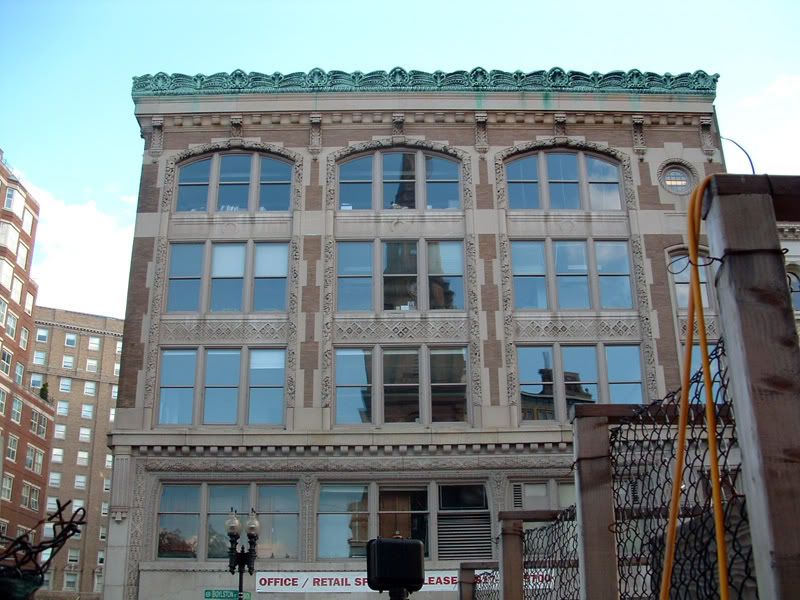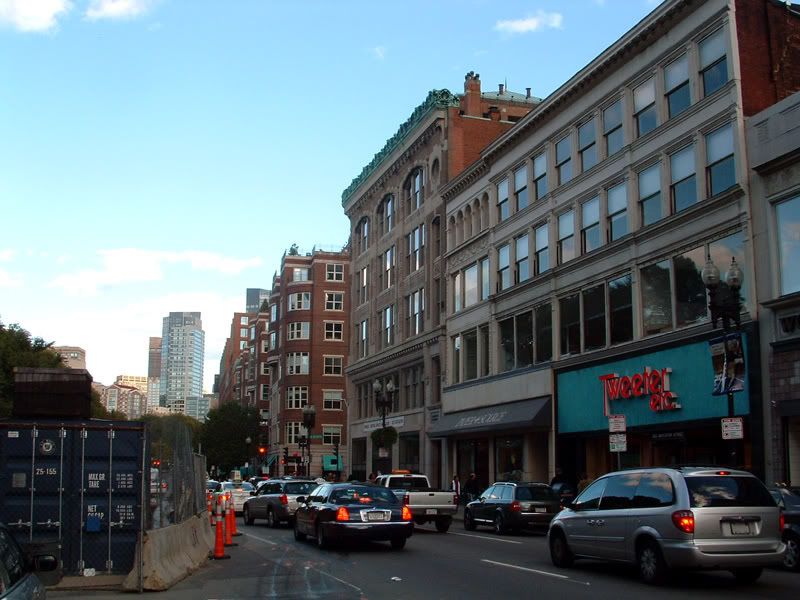You are using an out of date browser. It may not display this or other websites correctly.
You should upgrade or use an alternative browser.
You should upgrade or use an alternative browser.
Shreve, Crump & Low Redevelopment | 334-364 Boylston Street | Back Bay
- Thread starter statler
- Start date
stellarfun
Senior Member
- Joined
- Dec 28, 2006
- Messages
- 5,711
- Reaction score
- 1,544
Doubtful you'd ever get the okay to go above 90 feet there, because of the Public Garden.Chris said:Still would like to see it saved. But... also would like to see something taller than 90 feet.
And contrary to Druker's assertion, 'facadectomies' can work. While the corner building facade in the Boston Properties building (by Hartman Cox) in Washington DC in the link below, isn't a facadeectomy, as constructed it looks as if it had been there 80 or 90 years. It hasn't been, it was built on a parking lot. The renderings doesn't do it justice, from the standpoint of fidelity to the detail of another era. The building on that corner portion of the site is on a street that is an important visual axis, so I think architectural context was important.
See:
http://www.bostonproperties.com/site/properties/showproperty.aspx?sid=20&pid=52
In downtown Washington DC, the facadectomies are now being done on buildings built pre WWII, which have cornice lines and ornamentation. The facade is left and the inside demolished, a la Russia Wharf. Buildings that were constructed in the 60's, 70's, and 80's are having the facades torn off (and replaced) and the inside core rebuilt. There was certainly a lot of cheap crap built during the latter era, almost all of it by penny-pinching local developers.
'He would replace them with "a landmark for the next century or beyond," he said yesterday.'
Statements like this just make me cringe.
I would prefer to see the facade preserved, with something interesting plopped on top.
Statements like this just make me cringe.
I would prefer to see the facade preserved, with something interesting plopped on top.
stellarfun
Senior Member
- Joined
- Dec 28, 2006
- Messages
- 5,711
- Reaction score
- 1,544
Druker's Atelier 505


I don't think either the Colonnade or the Longwood Galleria (built by Druker) are iconic buildings that will be admired through this century and beyond.
Heritage on the Common is nice in its context, but isn't that pre-cast on the facade?


I don't think either the Colonnade or the Longwood Galleria (built by Druker) are iconic buildings that will be admired through this century and beyond.
Heritage on the Common is nice in its context, but isn't that pre-cast on the facade?
- Joined
- May 25, 2006
- Messages
- 7,033
- Reaction score
- 1,865
/\ That is nice, certainly nicer than most new construction in Boston, but not "iconic". Still I'll wait to see the renderings. I am sure he knows how tough this battle will be.
Ron Newman
Senior Member
- Joined
- May 30, 2006
- Messages
- 8,395
- Reaction score
- 13
I did not realize that this building had been altered so much (even truncated to extend a street!) since it was built, and that it wasn't originally built for Shreve. Still, I'd rather keep it.
atlantaden
Senior Member
- Joined
- May 31, 2006
- Messages
- 2,604
- Reaction score
- 2,743
"A new building well executed by a local developer who cares about the city, designed by a fine architect, will be far better than to create a 'facadectomy' that is not good architecture or good design," he said.
Makes perfect sense and should also apply to the Dainty Dot building. Seems the Boston Landmark Commission agrees as well.
Makes perfect sense and should also apply to the Dainty Dot building. Seems the Boston Landmark Commission agrees as well.
statler
Senior Member
- Joined
- May 25, 2006
- Messages
- 7,938
- Reaction score
- 543
And we should be all be given free Unicorn rides too..."A new building well executed by a local developer who cares about the city, designed by a fine architect ...
Joe_Schmoe
Active Member
- Joined
- May 25, 2006
- Messages
- 374
- Reaction score
- 0
The building is not a landmark, and I think the reason that people want to preserve it is that noone has any faith anymore that what a modern architect would design would be better. These days choices are always between Gehry-like absurdity, cheap precast mediocrity, and safe and dull contextualism. Given those choices I'd rather leave it alone as well.
P.S. I am a fan of Atelier, at least the Tremont St side where I think they did a good job capturing the old New England mill vibe and updating it nicely.
P.S. I am a fan of Atelier, at least the Tremont St side where I think they did a good job capturing the old New England mill vibe and updating it nicely.
Good idea.tocoto said:I'd like to see an exchange program where a developer rehabs these old small scale, irreplaceable buildings and in return is given an air rights parcel over the tpike to build a hi rise on. That would retain the city's character and be good for everyone although there would be some complaints I'm sure.
I wouldn't mourn the loss of the Shreve's building, but the article also said Drucker plans on knocking down the Women's Educational and Industrial Union building, which I think would be a much bigger loss. First off, I don't like the idea of a new building that needs such a large footprint, and the Women's Ed building has a really neat facade.
Ron Newman
Senior Member
- Joined
- May 30, 2006
- Messages
- 8,395
- Reaction score
- 13
WEIU moved out of the building a few years ago. I don't know if the building has that much aesthetic or historical value with them no longer in it.
Does the same logic apply to the Shreve building then? How about the mall food court, aka Quincy Market? I was bummed to see WEIU go, but it didn't change the way I feel about the building an iota.Ron Newman said:WEIU moved out of the building a few years ago. I don't know if the building has that much aesthetic or historical value with them no longer in it.
Ron Newman
Senior Member
- Joined
- May 30, 2006
- Messages
- 8,395
- Reaction score
- 13
I never thought the building had that much aesthetic value. Obviously I didn't want it to go away as long as WEIU still occupied it. Maybe I've missed something, and I should take another look.
I don't think the WEIU building is particularly special either. The lower facade has been changed a lot by the stores that have occupied it, and the second floor windows have no character. The only thing that defines the building is the fact that it says WEIU on it. At least that what it looks like to me.
Padre Mike
Active Member
- Joined
- Jan 27, 2007
- Messages
- 681
- Reaction score
- 1
^^AMEN to that! The interiors of both buildings' storefronts are fabulous and worth saving, not the "Boston" quality of both exteriors...They're worth saving.

